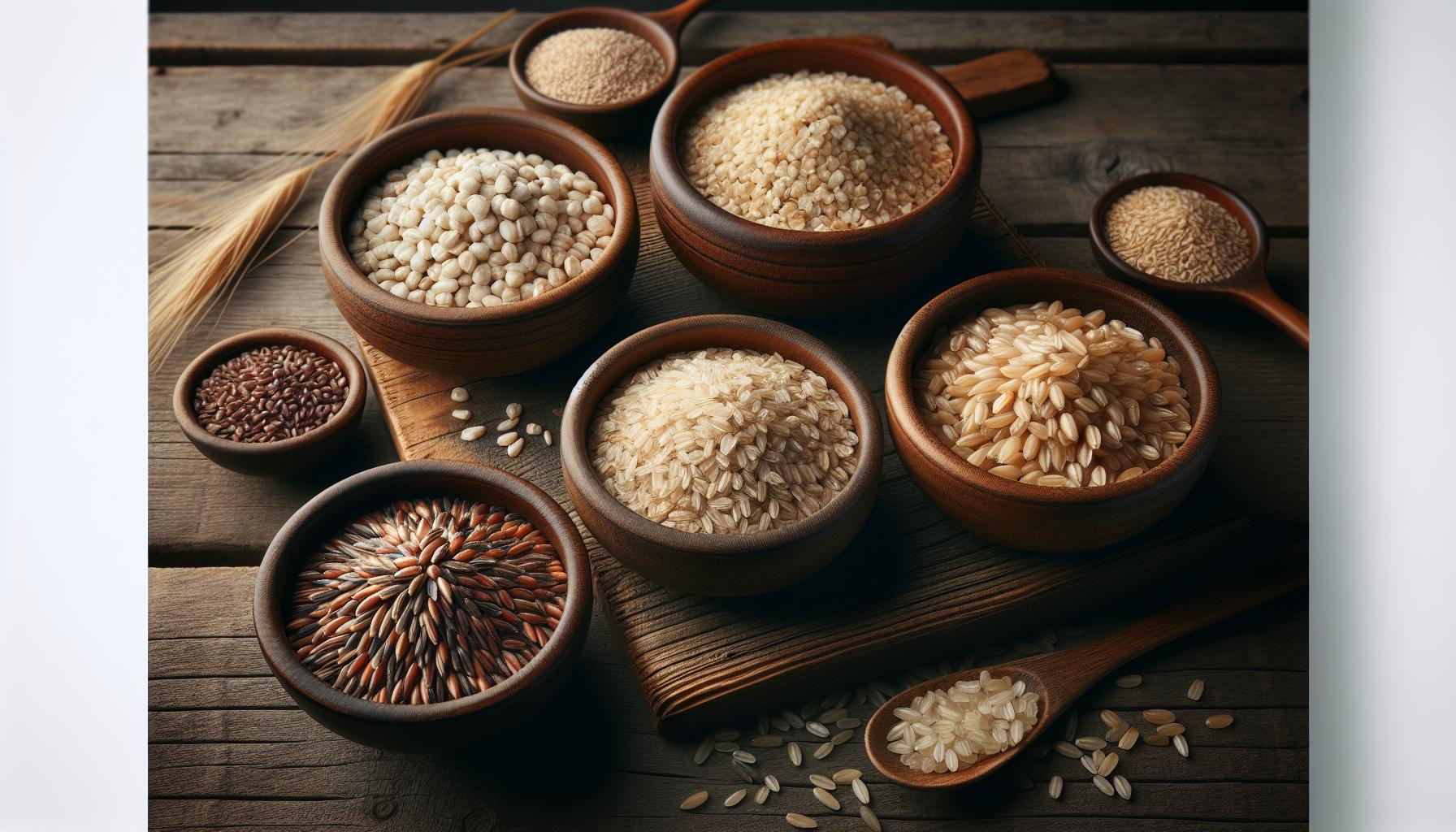Phone:
(701)814-6992
Physical address:
6296 Donnelly Plaza
Ratkeville, Bahamas.

Barley’s nutty flavor and chewy texture make it a delightful grain that’s often overlooked in modern kitchens. While many home cooks stick to rice or quinoa this ancient grain packs a nutritional punch that’ll transform everyday meals into hearty culinary adventures.
From creamy risottos to wholesome soups mastering barley cooking techniques isn’t rocket science. This versatile grain adapts beautifully to various cooking methods whether it’s a slow simmer on the stovetop or a quick pressure cooker preparation. And let’s face it – anyone who’s tasted perfectly cooked barley knows it’s worth moving beyond the “throw it in and hope for the best” approach.
Barley belongs to the grass family, featuring a dense, chewy grain with a distinctive nutty flavor. This ancient grain contains 3.5 grams of beta-glucan fiber per 100 grams, promoting heart health and stabilizing blood sugar levels.
| Nutrient (per 100g) | Amount |
|---|---|
| Calories | 354 |
| Protein | 12.5g |
| Fiber | 17.3g |
| Iron | 3.6mg |
| Magnesium | 133mg |
Pearl barley represents the most common variety in grocery stores, with the outer husk removed for quicker cooking. Hulled barley maintains its bran layer, offering enhanced nutritional benefits through increased fiber content.
The grain’s impressive nutritional profile includes:
Barley’s soluble fiber composition creates a gel-like substance in digestion, leading to:
This versatile grain serves as an excellent source of resistant starch, feeding beneficial gut bacteria. Research published in the Journal of Nutrition demonstrates barley’s effectiveness in reducing both cholesterol levels by 15% over 6 weeks.

Barley varieties differ in processing methods texture characteristics. Each type offers unique cooking properties nutritional benefits.
Pearl barley undergoes complete bran removal creating a quick-cooking pale grain with a smooth texture. The polishing process removes 30% of the grain including the fibrous bran layer resulting in a cooking time of 25-30 minutes. This variety appears white creamy in color offering a tender bite.
Hulled barley retains its bran layer protective hull removed containing 65% more fiber than pearl barley. The intact bran delivers 15 grams of fiber per serving plus essential minerals like manganese selenium. Cooking requires 45-60 minutes producing a chewy nutty grain that holds its shape.
Quick-cooking barley undergoes pre-steaming processing reducing cook time to 10-15 minutes. The grains maintain 95% of their nutritional content despite the shortened preparation time. Processing creates small cracks in the kernels allowing faster water absorption.
Instant barley offers a 5-minute cooking time through pre-cooking dehydration methods. These varieties come pre-portioned in convenient packages maintaining 85% of whole grain benefits. The texture appears slightly softer than traditional barley types maintaining the characteristic nutty flavor.
| Barley Type | Cooking Time | Fiber Content |
|---|---|---|
| Pearl | 25-30 min | 3.5g/serving |
| Hulled | 45-60 min | 15g/serving |
| Quick-cooking | 10-15 min | 3.3g/serving |
| Instant | 5 min | 3g/serving |
Barley preparation involves multiple cooking techniques that yield different textures and cooking times. Each method maintains barley’s nutritional benefits while adapting to various kitchen setups and time constraints.
The stovetop method creates perfectly cooked barley through a simple two-step process. Combine 1 cup of pearl barley with 3 cups of water or broth in a medium saucepan. Bring the liquid to a boil over high heat, then reduce to low heat and cover the pot. Pearl barley requires 25-30 minutes of simmering, while hulled barley takes 45-60 minutes to achieve tender results. The barley becomes tender when the liquid absorbs completely, leaving separate grains with a chewy texture. A quick test confirms doneness by biting into a few grains – they remain slightly firm but not hard in the center.
Pressure cooking reduces barley preparation time by 50% compared to stovetop cooking. Add 1 cup of barley with 2.5 cups of liquid to the pressure cooker. Pearl barley cooks in 15 minutes at high pressure, followed by a 10-minute natural release. Hulled barley requires 20 minutes at high pressure with a 15-minute natural release. The pressure cooker method produces consistent results while preserving barley’s nutty flavor. This technique creates tender grains that maintain their shape without becoming mushy.
| Cooking Method | Pearl Barley | Hulled Barley | Liquid Ratio |
|---|---|---|---|
| Stovetop | 25-30 min | 45-60 min | 1:3 |
| Pressure Cooker | 15 min | 20 min | 1:2.5 |
Achieving consistent barley texture depends on accurate measurements and timing. These essential techniques ensure tender yet chewy grains every time.
The ideal liquid ratio varies by barley type and cooking method. Pearl barley requires 3 cups of liquid per 1 cup of grain for stovetop cooking. Hulled barley needs 4 cups of liquid per 1 cup of grain due to its intact bran layer. Pressure cooking reduces liquid requirements to 2½ cups per cup of pearl barley and 3 cups for hulled barley.
| Barley Type | Stovetop Ratio | Pressure Cooker Ratio |
|---|---|---|
| Pearl | 1:3 | 1:2.5 |
| Hulled | 1:4 | 1:3 |
Properly cooked barley displays specific characteristics. The grains expand to three times their original size. Each kernel becomes tender yet maintains a slight chew at the center. A quick texture test involves picking up a few grains with a fork and pressing them against the pot’s side. The grains split open easily when ready. Excess liquid indicates more cooking time, while dry grains need additional liquid. Cooked barley maintains distinct kernels without clumping together.
| Doneness Indicators | Description |
|---|---|
| Size | Triple original |
| Texture | Tender with slight chew |
| Liquid | Mostly absorbed |
| Kernel Split | Easy separation |
Barley’s versatility shines through its wide range of culinary applications. Its chewy texture adapts perfectly to both hot comfort foods and refreshing cold dishes.
Classic beef barley soup combines pearl barley with tender chunks of beef, carrots, celery and onions in a rich broth. Mushroom barley soup features 2 cups of mixed mushrooms sautéed with garlic and herbs, creating an earthy vegetarian option. Traditional Scottish Scotch broth incorporates ½ cup of barley with lamb, root vegetables and fresh herbs for a hearty winter meal. Mediterranean fish stew uses barley instead of pasta, mixing it with white fish, tomatoes and Mediterranean herbs. These soups maintain their texture even after reheating, as barley doesn’t become mushy like other grains.
Cold barley salad mixes 2 cups of cooked pearl barley with roasted vegetables, fresh herbs and a lemon vinaigrette. Mediterranean barley pilaf combines the grain with roasted red peppers, pine nuts and feta cheese. Barley risotto uses the grain’s natural starch to create a creamy texture without cream, incorporating seasonal vegetables and Parmesan cheese. Asian-inspired barley bowls feature the grain with edamame, carrots and a sesame-ginger dressing. Roasted vegetable barley medley pairs the grain with 3 cups of oven-roasted root vegetables seasoned with fresh thyme and rosemary.
Cooked barley stays fresh in an airtight container in the refrigerator for 5 days. Store uncooked barley in a cool dark pantry space for up to 12 months in a sealed container. Freezing cooked barley extends its shelf life to 6 months when stored in portion sized freezer bags.
Batch cooking barley creates convenient ready to use portions:
Signs of spoiled barley include:
| Storage Method | Temperature | Duration |
|---|---|---|
| Pantry (uncooked) | 70°F/21°C | 12 months |
| Refrigerator | 40°F/4°C | 5 days |
| Freezer | 0°F/-18°C | 6 months |
Mastering barley cooking techniques opens up a world of culinary possibilities. This versatile grain’s adaptability to various cooking methods makes it an excellent choice for both novice and experienced cooks. Whether using pearl barley for quick weeknight meals or hulled barley for nutrient-rich dishes the proper techniques ensure perfect results every time.
From comforting soups to refreshing salads barley’s nutty flavor and chewy texture add depth to any dish. Its impressive nutritional profile paired with proper storage methods makes it a practical and healthy addition to any kitchen. Armed with these cooking techniques home cooks can confidently incorporate this ancient grain into their modern meal rotations.